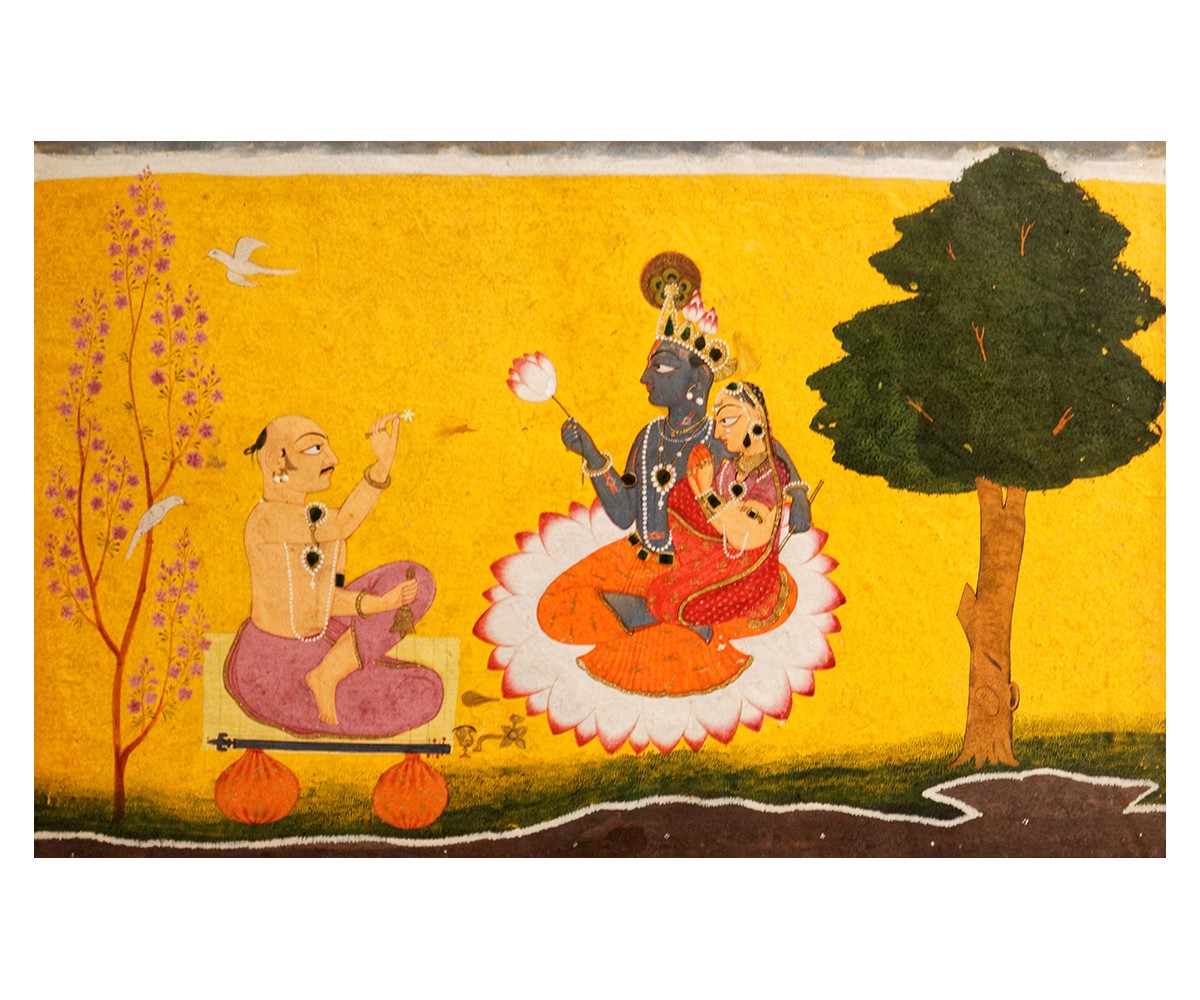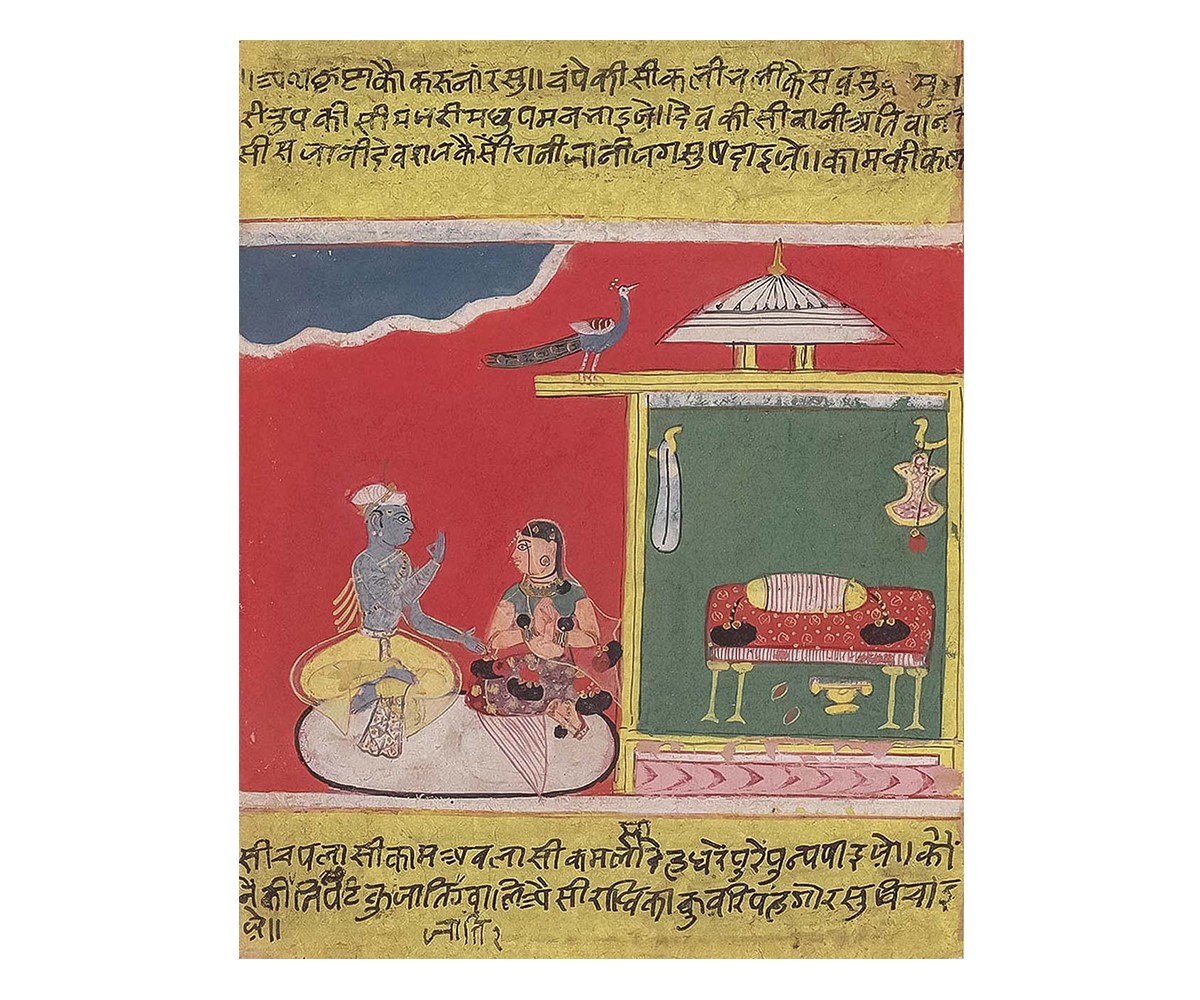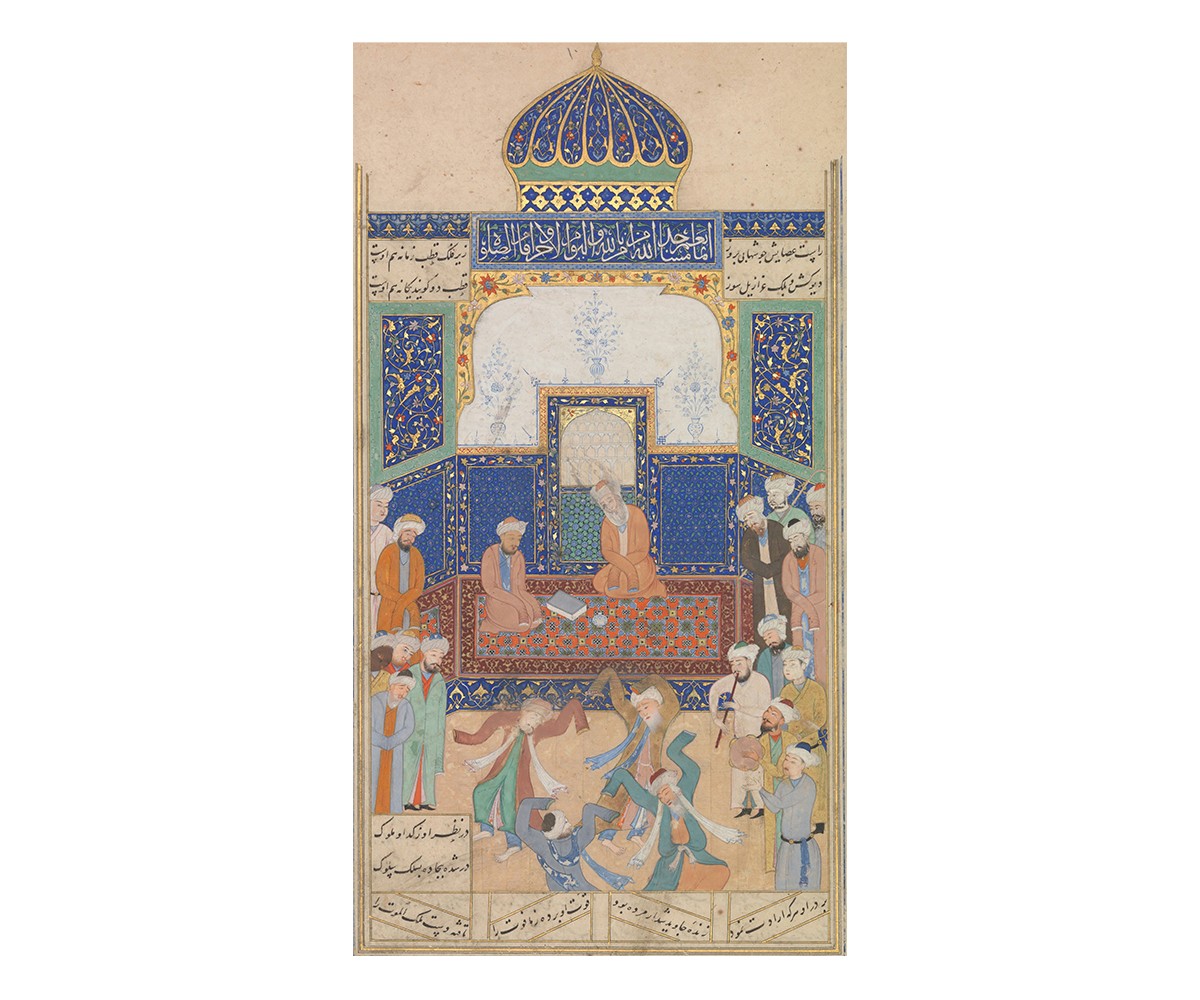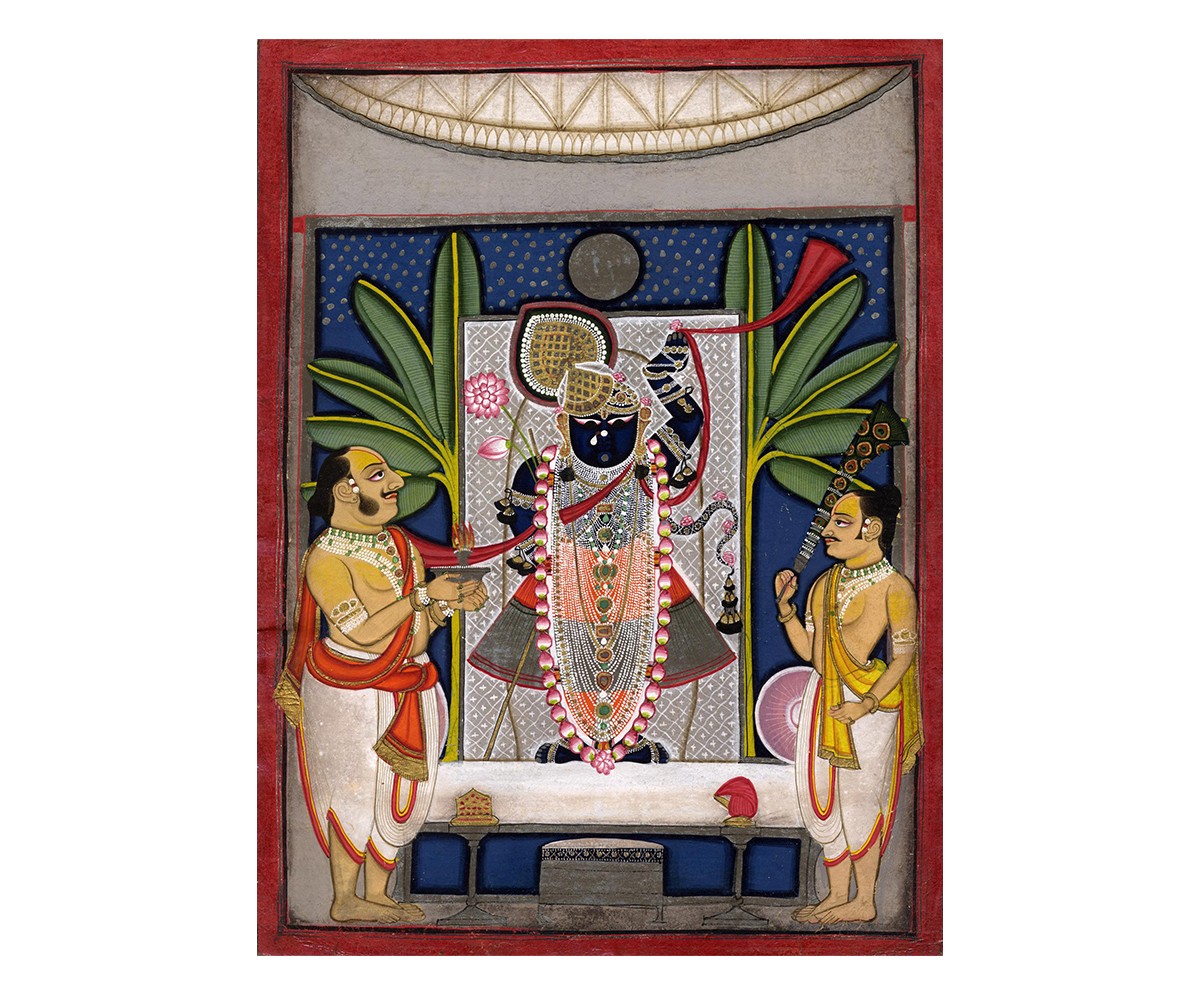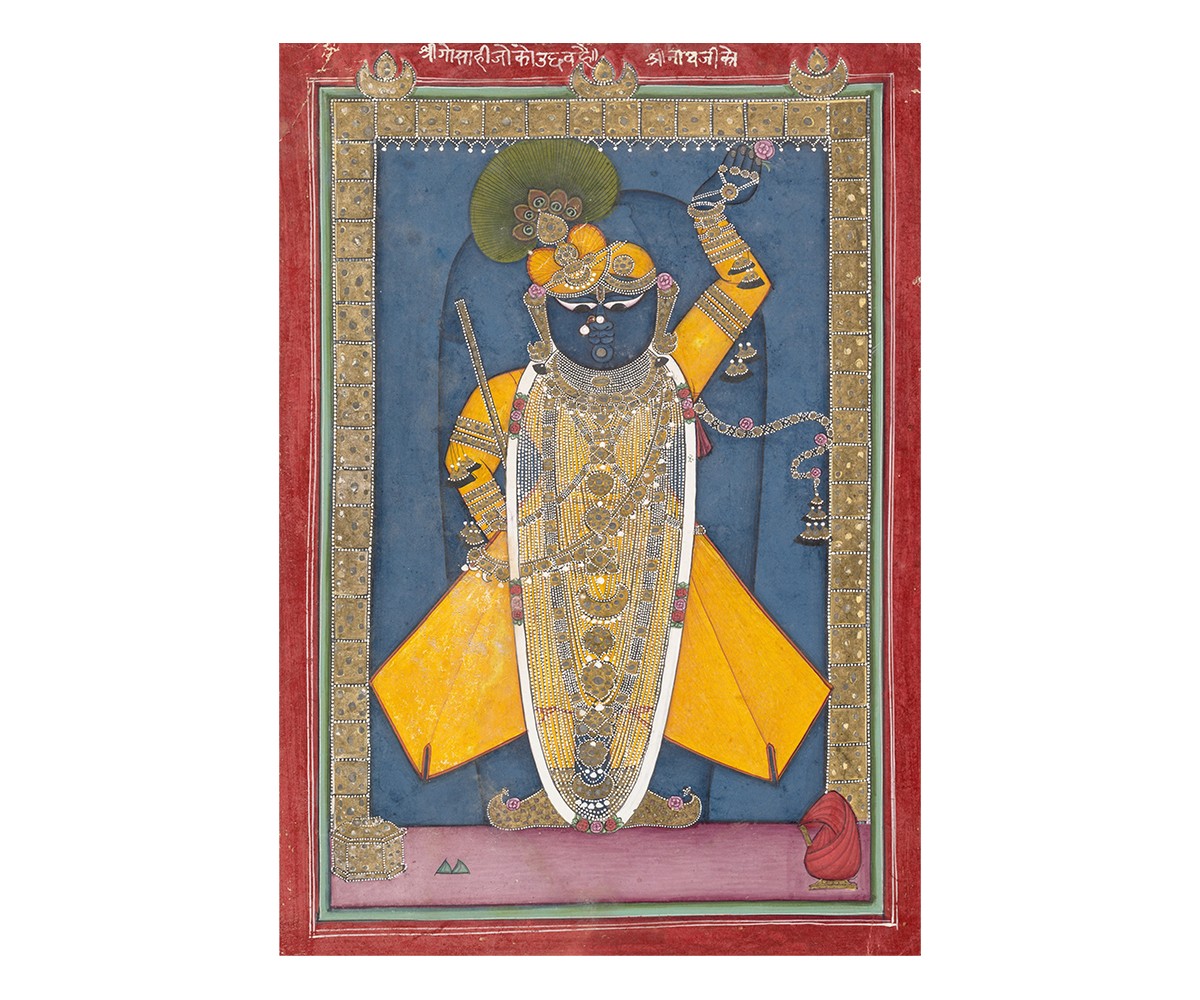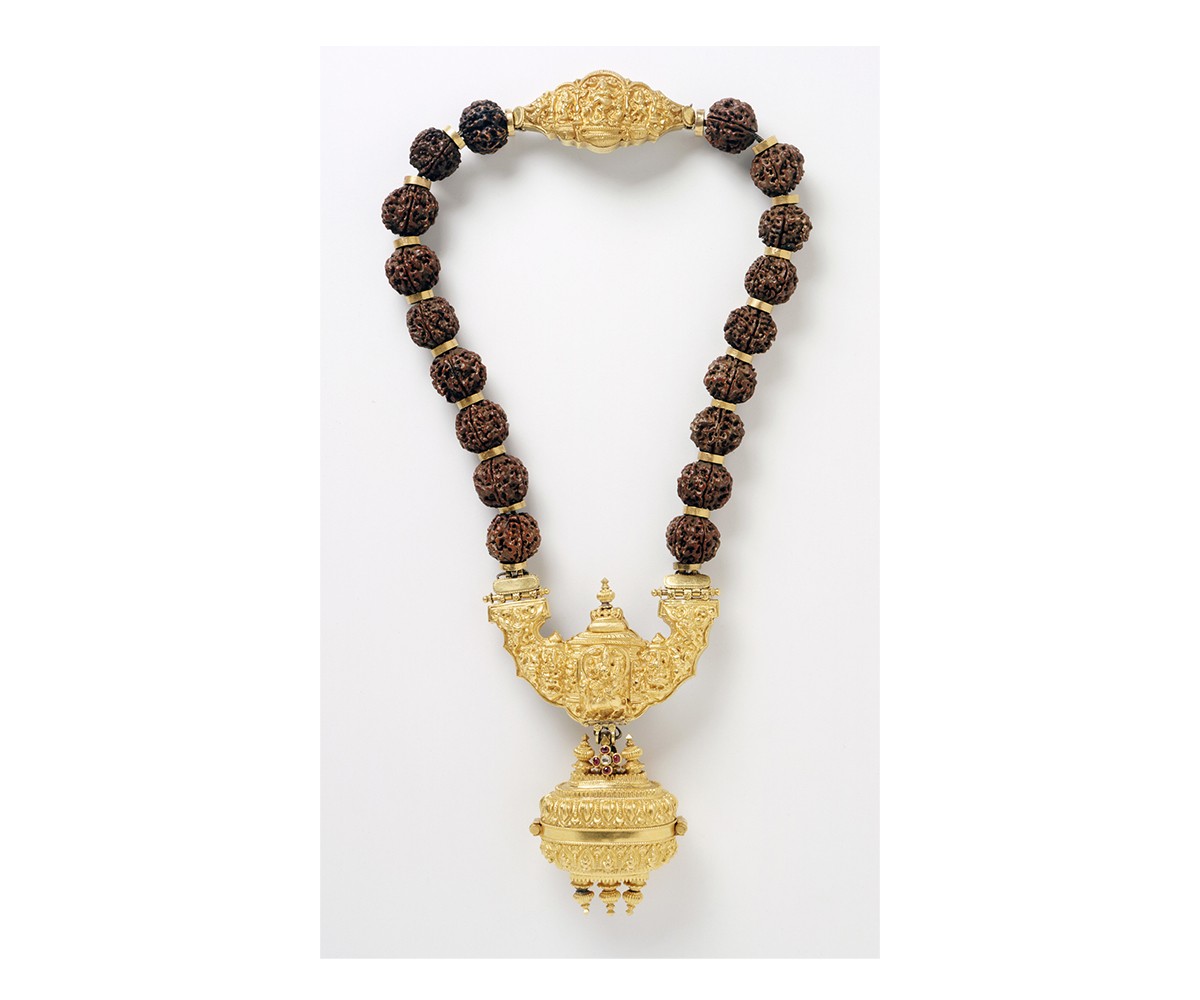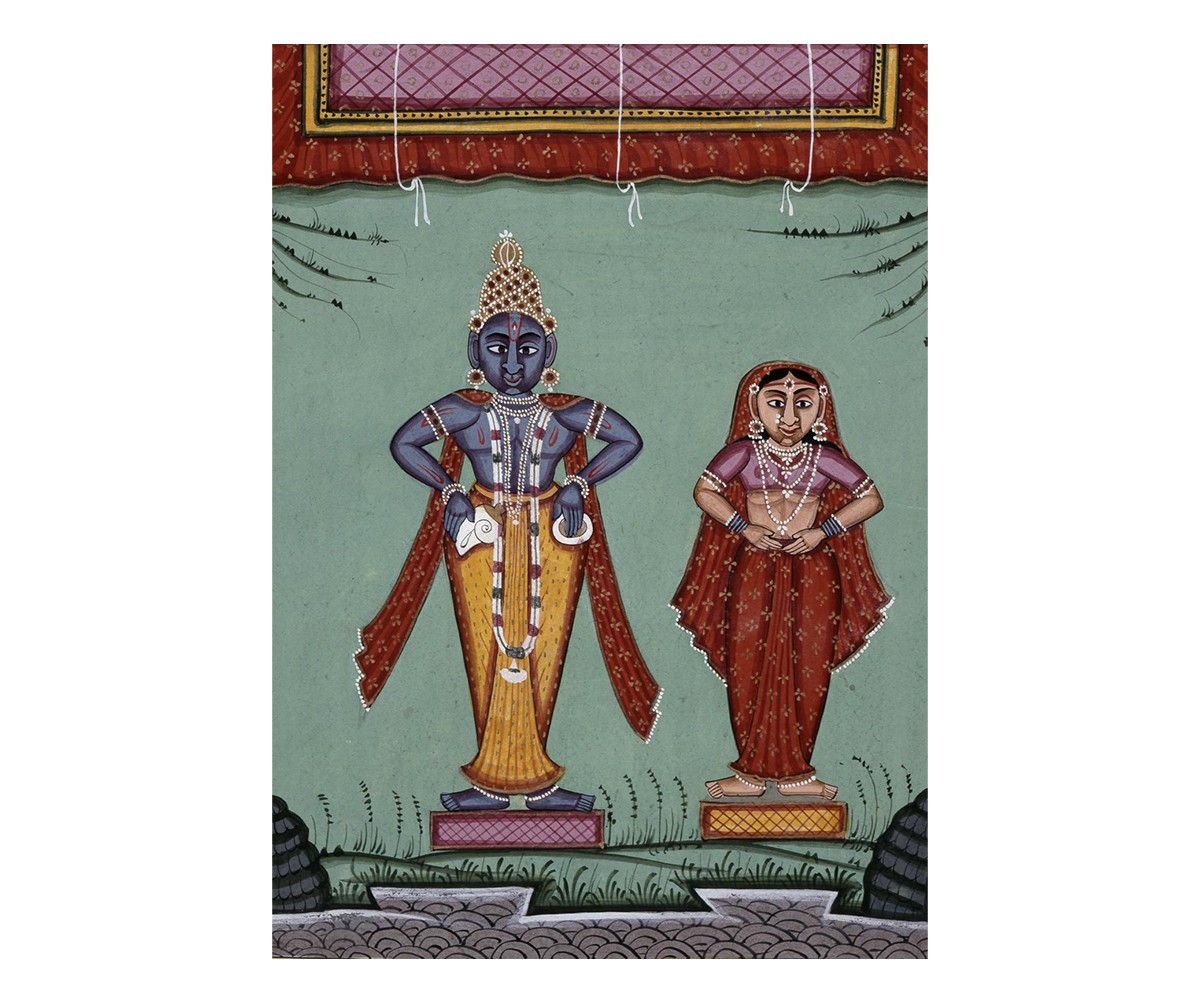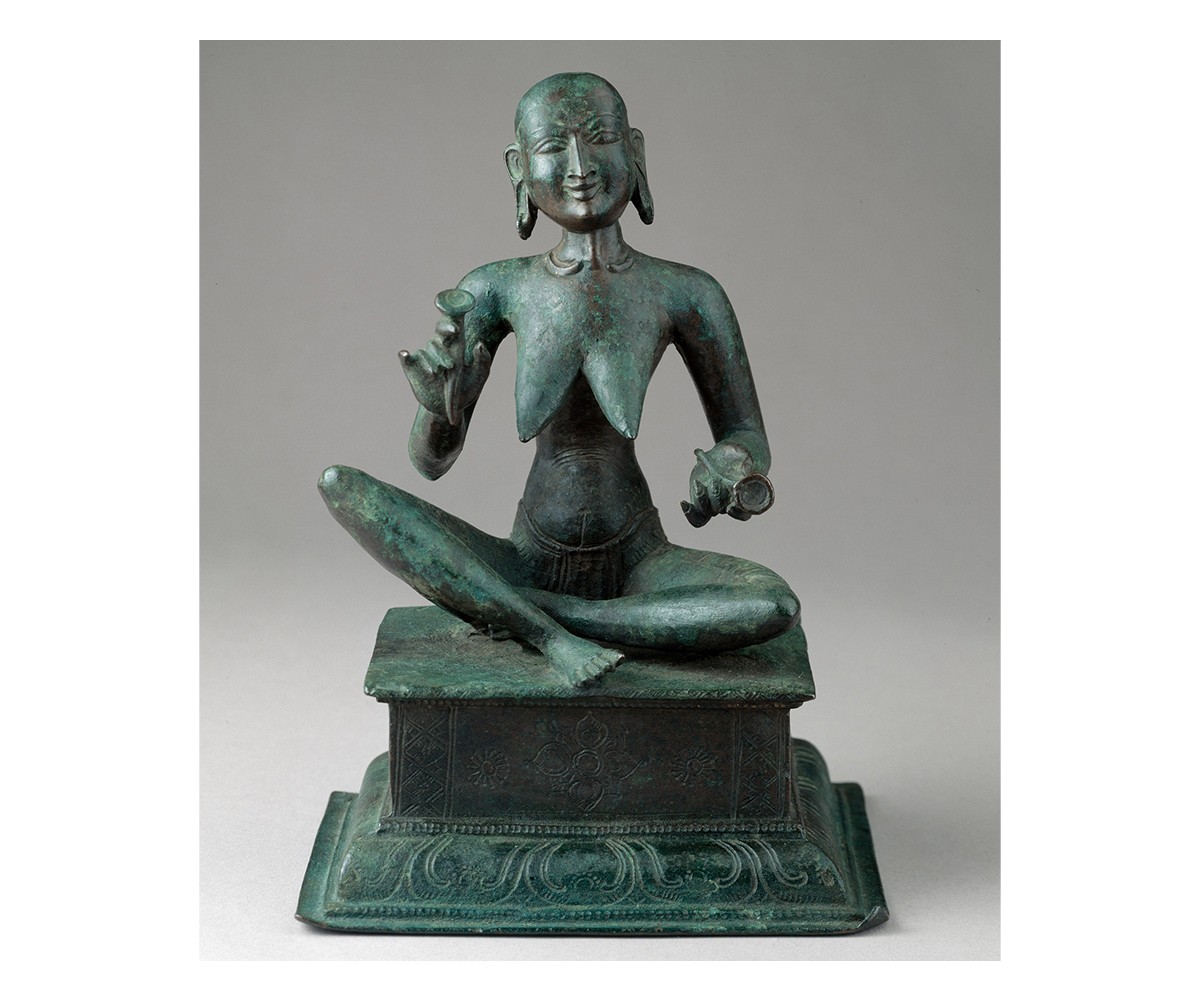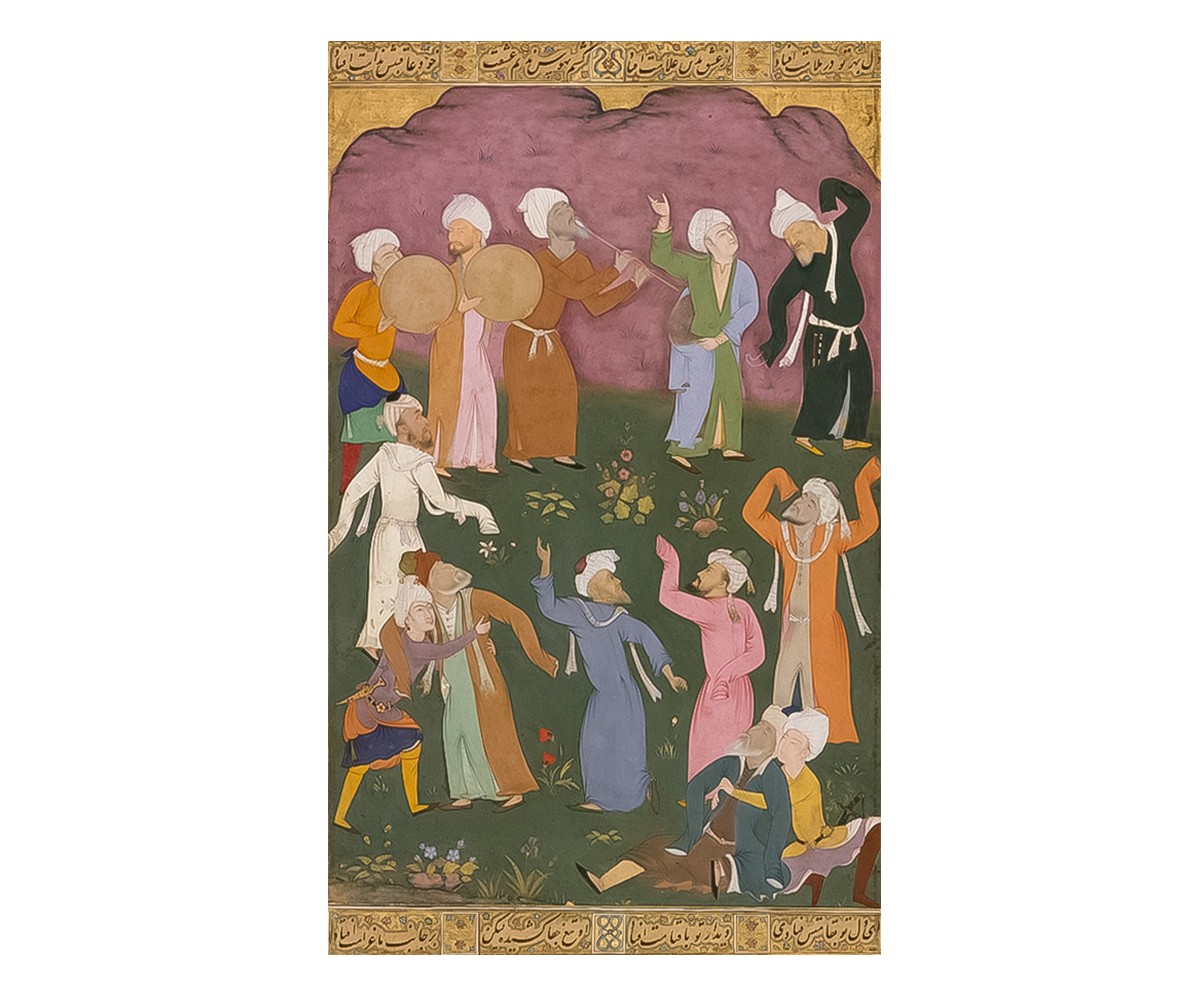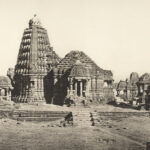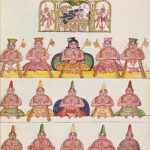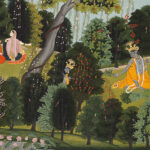New Bhakti and Sufi Movements Begin in North India
1150–1200
Drifting away from control of the priestly class in worship, bhakti laid an emphasis on personal devotion to god. As a result, most groups of bhakti saints and proponents were committed to the worship of specific deities — for example, the Alvars and Pushtimarg Sampradaya were Vaishnavas; Nayanars and Lingayats were Shaivas; and the Vadakalai and Tenkalai conflated Vaishnavism with the worship of the goddess Sri into Srivaishnavism.
In the territories ruled by the Pallavas and Cholas, the bhakti movement becomes part of the institutional firmament through extensive temple building as well as bhakti hymns dedicated to consecrated deities. On the other hand, Lingayats, predominant in present-day Karnataka, are opposed to temple worship, and advocate the wearing of the shivalinga (the aniconic representation of Shiva) by devotees.
The bhakti movement fuses religious worship with literary activity, leaving behind a vast corpus of literature that expands literary poetics in regional languages as opposed to classical Sanskrit, in texts such as Gita Govinda by Jayadeva, Borgeets by Shankardev, and Kabir Bijak by Kabir. While texts like the Gita Govinda become central to aesthetic developments in music, painting and performance, the cult of Pushtimarg in present-day Rajasthan leads to the foundation of Nathdwara painting. Shankardev transforms the cultural life of Assam through the creation of a new literary language, Brajavali. The tenth and eleventh centuries also see the growth of Sufi silsilas (orders) in the subcontinent, from the northwestern frontier to regions around Delhi. Sufi silsilas are centred around the pir (master-teacher), who serves as a theological and spiritual guide to his murids (devotee-students), moving beyond the prescriptive religious texts and law.
Bibliography
Dehejia, Vidya. The Body Adorned: Dissolving Boundaries Between Sacred and Profane in India’s Art. Ahmedabad: Mapin Publications, 2009.
Dirks, Nicholas B. The Hollow Crown: Ethnohistory of an Indian Kingdom, Cambridge South Asian Studies. New York: Cambridge University Press, 1988.
Flood, Gavin. An Introduction to Hinduism. Cambridge: Cambridge University Press, 1996.
Hawley, John Stratton. A Storm of Songs: India and the Idea of the Bhakti Movement. Cambridge, MA: Harvard University Press, 2015.
Sarkar, Tanika. Hindu Wife, Hindu Nation: Community, Religion, and Cultural Nationalism. New Delhi: Permanent Black, 2001.
Singh, Upinder. A History of Ancient and Early Medieval India: From the Stone Age to the 12th Century. New Delhi: Pearson, 2016.
Feedback 
This entry appears in
Art in South Asia
Visit Timeline
Associated Timeline Events
First Published: March 11, 2024
Last Updated: August 5, 2024



